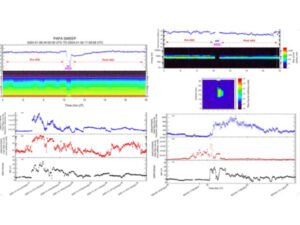ISRO informed that the Aditya spacecraft has detected the impact of the solar wind released from the coronal region of the Sun.
Aditya L1 misison
 The Indian Space Research Organization (ISRO) has designed a spacecraft, Aditya L-1, to explore the outer region of the Sun. The spacecraft was launched by a PSLV C-57 rocket from Sriharikota on September 2. It then traveled for 127 days and settled into an orbit centered at the Lagrangian point L-1, 15 lakh km from Earth, on January 6. From there, the spacecraft is studying the corona, photosphere and chromosphere regions of the Sun.
The Indian Space Research Organization (ISRO) has designed a spacecraft, Aditya L-1, to explore the outer region of the Sun. The spacecraft was launched by a PSLV C-57 rocket from Sriharikota on September 2. It then traveled for 127 days and settled into an orbit centered at the Lagrangian point L-1, 15 lakh km from Earth, on January 6. From there, the spacecraft is studying the corona, photosphere and chromosphere regions of the Sun.
Coronal Mass Ejection on solar wind detected
ISRO has announced that the Aditya spacecraft has successfully detected the impact of Coronal mass ejection (CMEs) on solar wind in the outer region of the Sun. ISRO issued an announcement in this regard, stating that the spacecraft was equipped with the Plasma Analyzer Package for Aditya-(PAPA) to study solar storms and their energetic ions. This tool is operational from 23 December 2023 and currently working fine. On February 10 and 11, it detected the release of high-energy particles from the coronal region that is the outer region of the Sun.

The survey data for this has been published on the official website of ISRO (www.isro.gov.in). ‘PAPA’ is an energy and mass analyzer which has 2 sensors namely Solar Wind Electron Energy Probe (SWEEP) and Solar Wind Ion Composition Analyser (SWICAR). These sensors are used to measure the size and direction of solar wind particles and ions. It was designed by the Vikram Sarabhai Space Research Center in Thiruvananthapuram.
This instrument will continue to carry out its meticulous studies in space. Meanwhile, the Aditya spacecraft will monitor and study the activities of the Sun for the next 5 years.












Comments 1